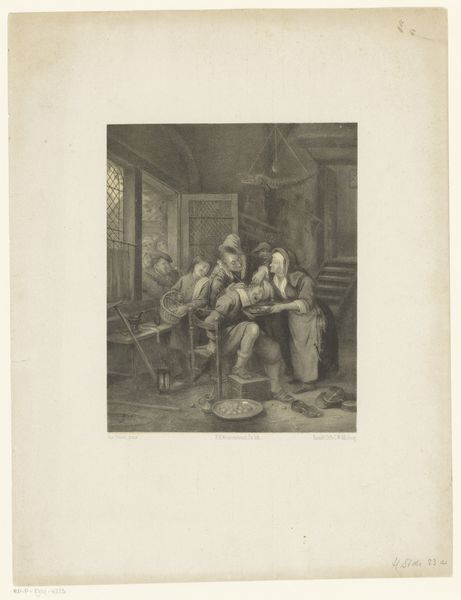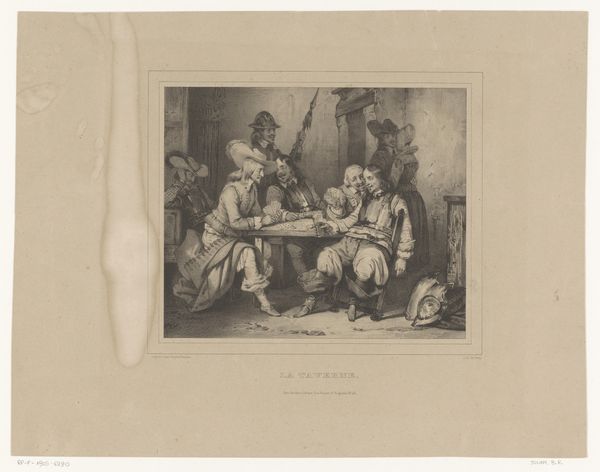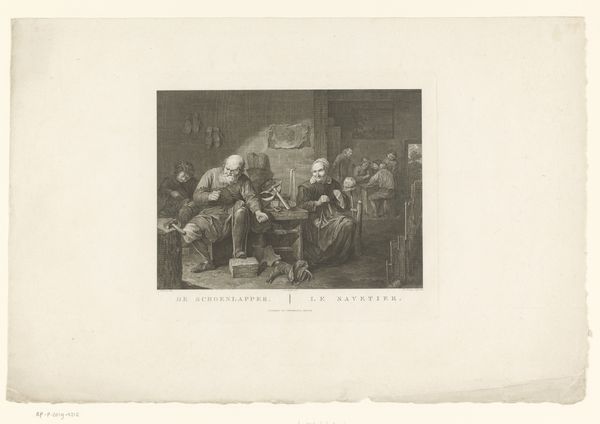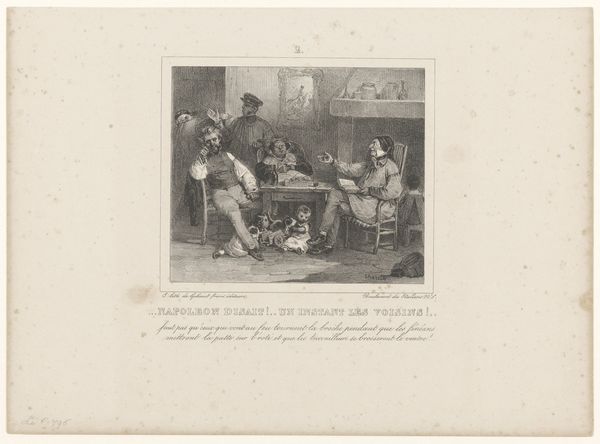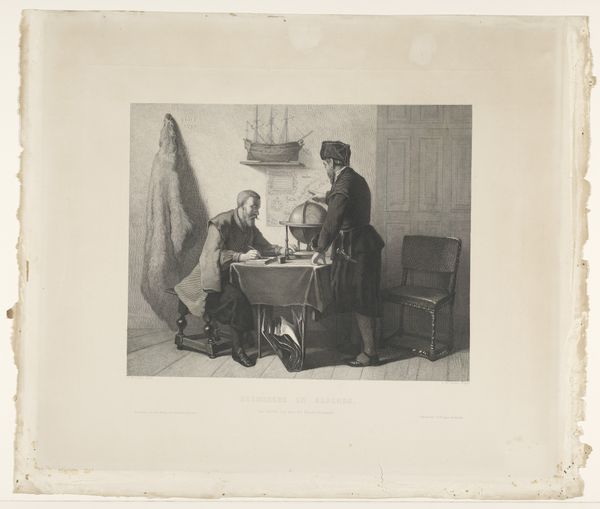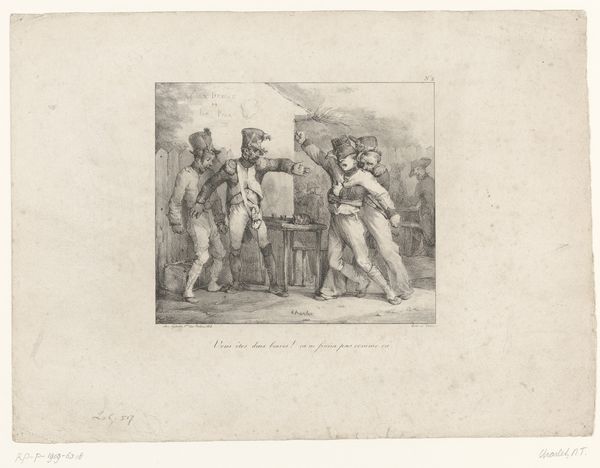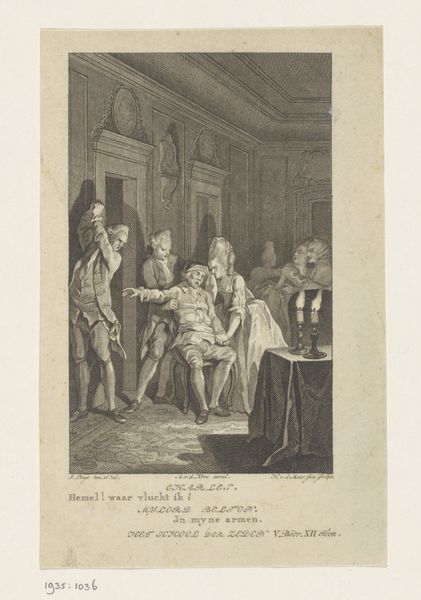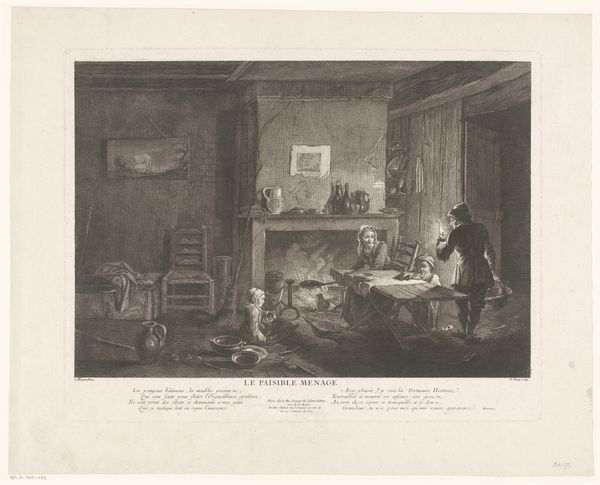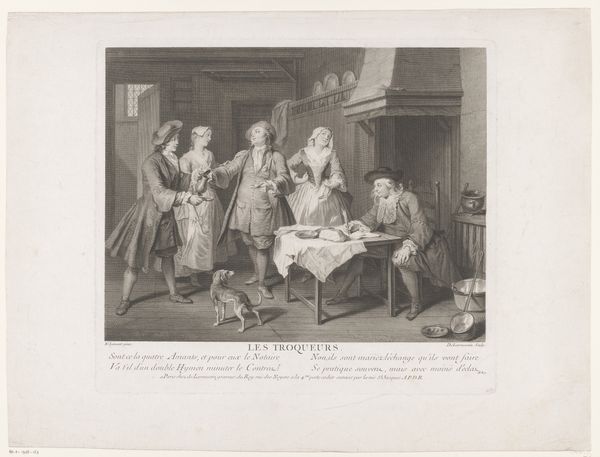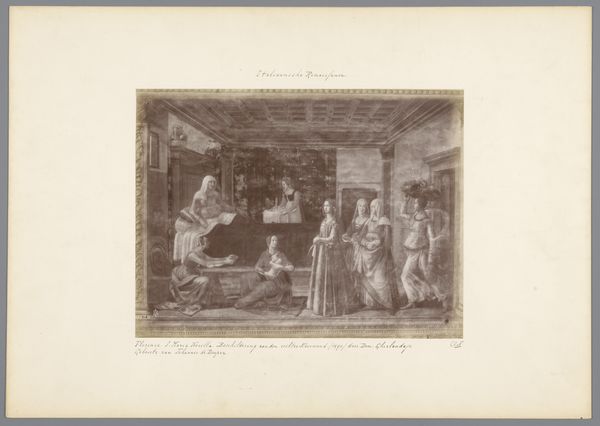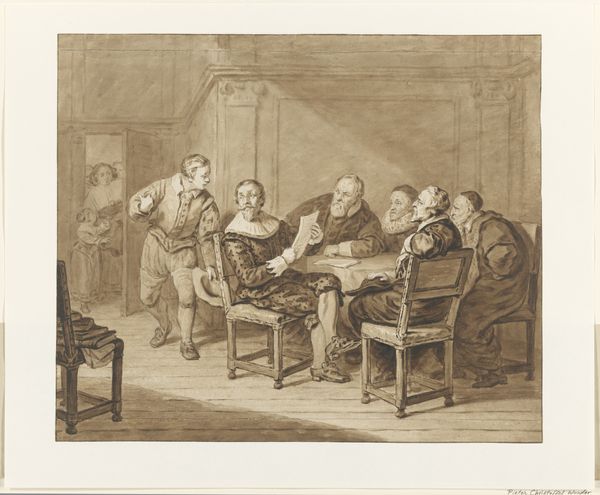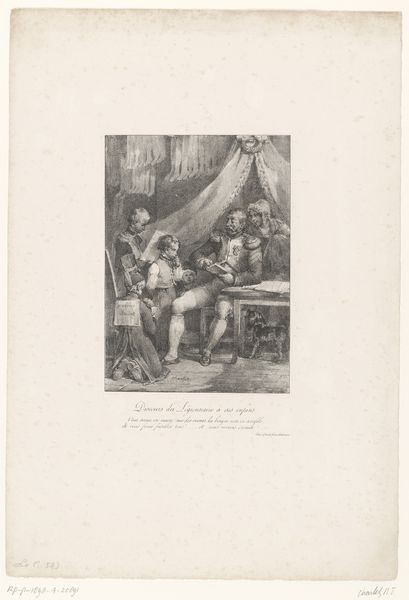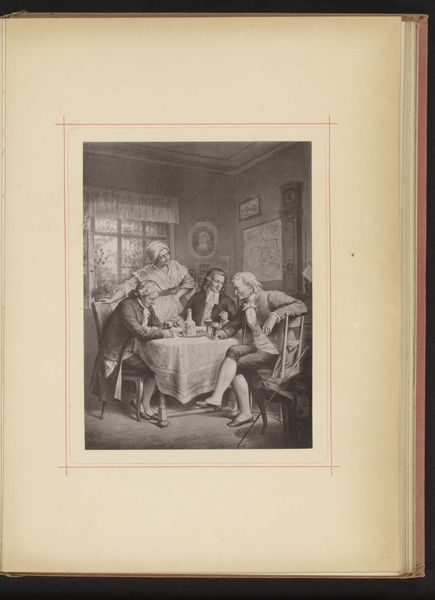
Dimensions: height 206 mm, width 238 mm
Copyright: Rijks Museum: Open Domain
Curator: Let's turn our attention to "Lezing in het huis van Diderot," an 1878 engraving by Augustin Mongin, illustrating a reading taking place in Diderot’s home. Editor: It strikes me as remarkably still. Despite the implied activity, the print has a contemplative mood, like a moment frozen in time. Curator: Indeed, the composition speaks volumes about the Enlightenment and the burgeoning public sphere. Note the way the figures are arranged: gathered around the table, deeply engaged with the text, their postures reflective of intense intellectual concentration. We see here the literal manifestation of a public being forged in the context of literature. Editor: And those books! The imposing bookcase dominates the background. Its symbolic presence underscores the era's profound connection to knowledge, a tangible representation of accumulated wisdom and tradition that informs the discourse happening in the foreground. Is the window shutter drawn down or merely reflecting the indoor light, keeping the outside world at bay while their circle considers how to illuminate the world? Curator: Good question. Mongin is placing us in a specific moment and, critically, situating that moment within a trajectory of revolutionary thought. Remember, Diderot’s home wasn't just a salon; it was a nexus of radical discourse that influenced political movements and social reforms. Considering that the work was produced nearly a century later, we have to remember how neoclassicism can evoke or rewrite such historical settings for a contemporary public, using this image to reinforce collective memory, social values, and political identities. Editor: And what of the specific poses and gestures that suggest social etiquette as well as deference for this place? Their gestures point, ponder, question. Mongin conveys this era as almost a new type of secular temple that elevates intellectual exchange as central to cultural progress. Curator: Precisely! The engraving prompts us to ask: Who had access to these spaces? Whose voices were heard? And how do those historical dynamics continue to shape our present? Editor: For me, the enduring resonance comes from that feeling of intimate discovery – the shared experience of illuminating the unknown through dialogue. Even through an engraving we perceive their world and the promise that something new can emerge from thoughtful encounters with art, philosophy, and each other. Curator: Well said, this image stands as a testament to the enduring power of intellectual gatherings, a reminder of the revolutionary potential of ideas exchanged in spaces dedicated to thought and discourse.
Comments
No comments
Be the first to comment and join the conversation on the ultimate creative platform.
